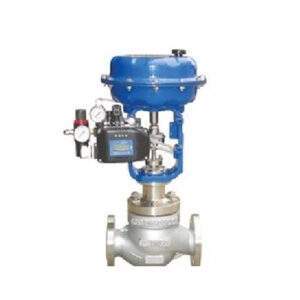Introduction

Air control valves are essential components in various pneumatic systems, playing a crucial role in directing and regulating the flow of compressed air. From simple on/off switching to precise flow control, these valves are fundamental to the operation of countless industrial processes and automated systems. This comprehensive guide delves into the world of air control valves, exploring their diverse applications, numerous benefits, different types, selection criteria, maintenance tips, and frequently asked questions. Understanding the intricacies of air control valves is crucial for anyone working with pneumatic systems, ensuring efficient operation, optimal performance, and enhanced safety.
What are Air Control Valves?
Air control valves, also known as pneumatic valves, are mechanical devices designed to control the flow of compressed air within a pneumatic system. They function by opening, closing, or partially obstructing passageways within the valve body, thereby directing air to different parts of the system. These valves can be actuated manually, mechanically, electrically, or pneumatically, offering flexibility in design and implementation. The core function of air control valves is to manage the pressure, flow rate, and direction of compressed air, enabling precise control over pneumatic actuators like cylinders and motors.
Types of Air Control Valves
The versatility of air control valves stems from the wide array of types available, each designed for specific applications and functionalities. Here are some of the most common types:
-
Directional Control Valves: These valves control the direction of airflow, determining which path the compressed air takes. They are classified by the number of ports (connections) and positions (switching states). Common configurations include 2/2-way (2 ports, 2 positions), 3/2-way, 5/2-way, and 5/3-way valves.
- 2/2-Way Valves: These are simple on/off valves, allowing or blocking airflow.
- 3/2-Way Valves: These valves have three ports and two positions, typically used to control single-acting cylinders.
- 5/2-Way Valves: These valves have five ports and two positions, commonly used to control double-acting cylinders.
- 5/3-Way Valves: These valves have five ports and three positions, offering more complex control options, such as center-off or center-pressure.
-
Flow Control Valves: These valves regulate the rate of airflow, controlling the speed of pneumatic actuators. They can be fixed or adjustable, providing precise control over actuator speed.
- Needle Valves: These valves use a tapered needle to restrict airflow, offering fine adjustment.
- Check Valves: These valves allow airflow in only one direction, preventing backflow.
- Quick Exhaust Valves: These valves rapidly exhaust air from a cylinder, increasing actuator speed.
-
Pressure Control Valves: These valves manage the pressure of the compressed air within the system.
- Pressure Reducing Valves: These valves reduce a higher inlet pressure to a lower outlet pressure.
- Pressure Relief Valves: These valves protect the system from overpressure by releasing excess air.
- Shuttle Valves (OR Valves): These valves allow airflow from either of two inlets to a single outlet.
- Time Delay Valves: These valves introduce a time delay before switching, useful for sequencing operations.
Applications of Air Control Valves
Air control valves find extensive use across various industries and applications:
- Manufacturing: Controlling automated machinery, robotic arms, and assembly lines.
- Packaging: Operating packaging machines, filling systems, and labeling equipment.
- Automotive: Controlling pneumatic brakes, suspension systems, and robotic welding.
- Food and Beverage: Operating filling machines, bottling lines, and packaging equipment.
- Pharmaceutical: Controlling automated processes in drug manufacturing and packaging.
- Textiles: Operating weaving machines, spinning machines, and other textile equipment.
- Medical Devices: Controlling pneumatic actuators in medical equipment and devices.
Benefits of Using Air Control Valves
Employing air control valves in pneumatic systems offers numerous advantages:
- Precise Control: They enable accurate control over actuator movement, speed, and force.
- Fast Response Times: They offer quick switching speeds, facilitating rapid automation processes.
- Reliability and Durability: They are robust and can withstand harsh industrial environments.
- Cost-Effectiveness: They are relatively inexpensive compared to other control technologies.
- Safety: They are inherently safe in hazardous environments, as they do not generate sparks.
- Ease of Installation and Maintenance: They are relatively easy to install and maintain.
- Versatility: They are available in a wide variety of types and configurations to suit diverse applications.
Selection Criteria for Air Control Valves
Choosing the right air control valves is crucial for optimal system performance. Several factors should be considered:
- Flow Rate: The required airflow capacity of the valve.
- Pressure Range: The operating pressure range of the system.
- Number of Ports and Positions: The required configuration for the application.
- Actuation Type: Manual, mechanical, electrical, or pneumatic.
- Valve Size and Mounting: The physical dimensions and mounting requirements.
- Operating Environment: Temperature, humidity, and other environmental factors.
- Media Compatibility: The compatibility of the valve materials with the compressed air and any other media present.
Comparison of Air Control Valve Characteristics
| Characteristic | Directional Control Valves | Flow Control Valves | Pressure Control Valves |
|---|---|---|---|
| Primary Function | Directs airflow | Regulates airflow rate | Manages air pressure |
| Common Types | 2/2-way, 3/2-way, 5/2-way, 5/3-way | Needle valves, Check valves, Quick exhaust valves | Pressure reducing valves, Pressure relief valves |
| Application Examples | Controlling cylinders, actuators | Adjusting actuator speed | Maintaining system pressure, preventing overpressure |
| Key Considerations | Number of ports and positions, actuation type | Flow rate, adjustment range | Pressure range, pressure setting |
Maintenance of Air Control Valves

Proper maintenance is essential to ensure the longevity and reliable operation of air control valves:
- Regular Inspection: Check for leaks, damage, and wear.
- Cleaning: Keep the valves clean and free from contaminants.
- Lubrication: Lubricate moving parts as needed.
- Filter Maintenance: Regularly clean or replace air filters to prevent contamination.
- Leak Detection: Promptly address any air leaks.
- Proper Installation: Ensure correct installation and connection of the valves.
Conclusion
Air control valves are indispensable components in modern pneumatic systems, offering precise control, reliable performance, and numerous benefits. Understanding the different types, applications, selection criteria, and maintenance practices is essential for maximizing the efficiency and longevity of these crucial devices. By carefully selecting and maintaining air control valves, industries can optimize their automated processes, enhance productivity, and ensure safe and reliable operation. This comprehensive guide has provided a detailed overview of air control valves, equipping readers with the knowledge needed to make informed decisions and effectively utilize these versatile components.
FAQ
Q: How do I choose the right size air control valve?
A: The valve size should be selected based on the required flow rate and pressure of the system. Consult valve manufacturers’ datasheets for specific sizing information.
Q: How often should air control valves be maintained?
A: Maintenance frequency depends on the operating environment and application. Regular inspections and preventive maintenance are recommended.
Q: What are the benefits of using electrically actuated air control valves?
A: Electrically actuated valves offer faster switching speeds, greater control flexibility, and compatibility with electronic control systems.
